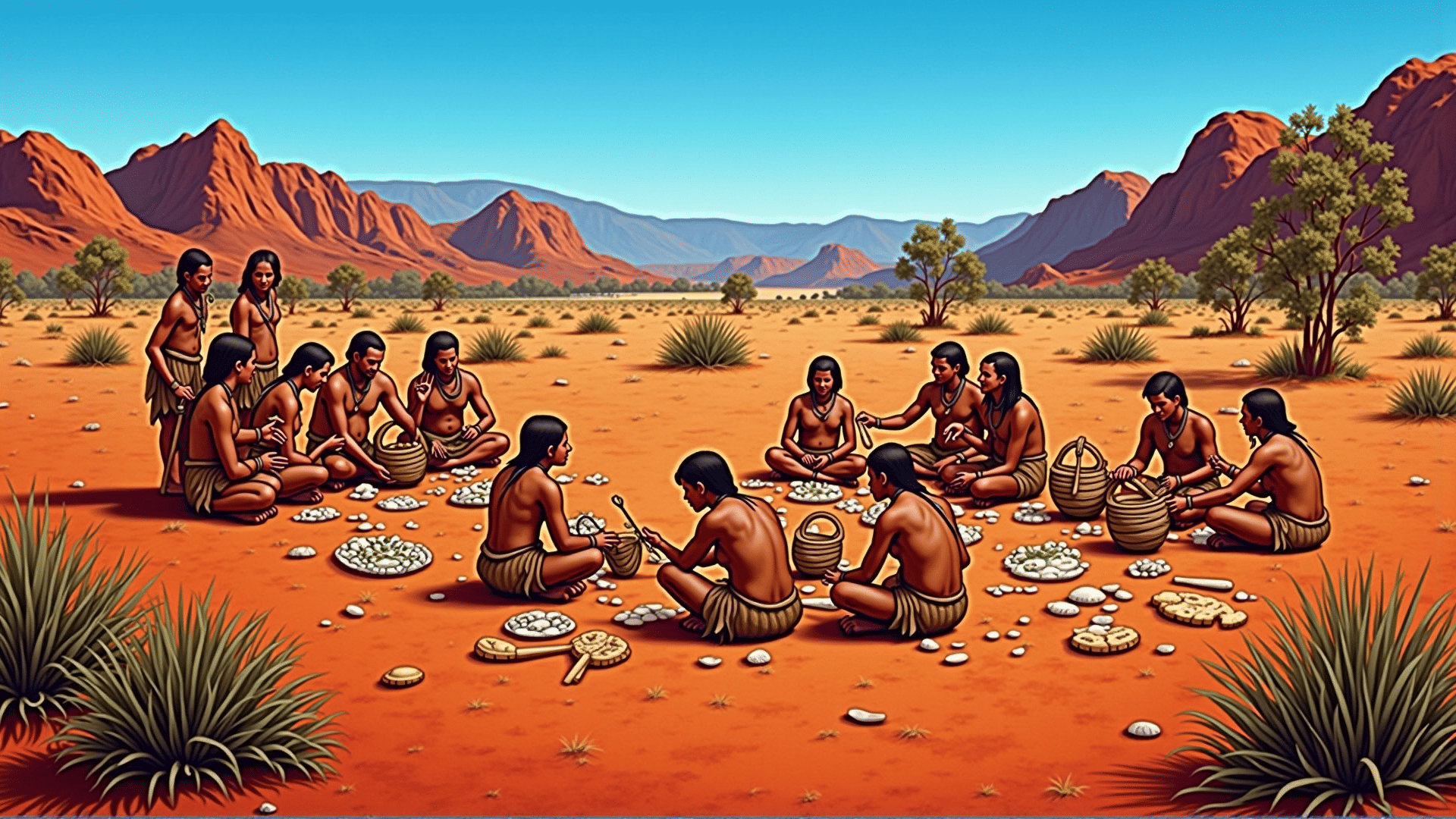The trade systems of Aboriginal communities were remarkable for their complexity and the way they facilitated the distribution of resources across vast distances. Long before European settlements appeared, Indigenous groups across Australia developed intricate networks that linked them, allowing for the exchange of goods, services, and cultural practices. These vast networks extended across diverse ecological zones, enhancing the distribution of resources and ensuring the survival and prosperity of numerous communities.
In this article, we will explore how these trade networks were structured, the items that were commonly exchanged, and the impact such systems had on the creation and distribution of wealth among Aboriginal peoples.
Structure of Trade Networks
Aboriginal trade networks were sustained by a series of well-established routes spanning thousands of kilometers. These routes traversed a variety of landscapes – from desert interiors to coastal regions – illustrating the adaptability and resilience of Indigenous groups. The trade pathways were marked by waypoints, such as sacred sites or natural landmarks, and were maintained by the traditional knowledge passed down through generations.
Relationships between different groups were crucial in maintaining these networks. Trade often necessitated strong kinship ties, alliances, and protocols that were respected by all parties involved. Gatherings, such as ceremonial events, facilitated the reinforcement of these ties and provided opportunities for trading, further integrating communities.
Commonly Exchanged Items
The items traded among communities varied widely, reflecting the diverse ecosystems across the continent. Common trade items included tools, such as stone axes and knives, crafted from region-specific materials. Ochre, a naturally occurring pigment pivotal for cultural ceremonies, was a highly prized trade commodity, sourced from particular mines and distributed widely.
Shells from coastal areas were traded inland and used as tools or adornments. Similarly, animal products like skins and furs, sourced from distinct ecological regions, were traded for their utility and status as indicators of wealth. Foodstuffs, including nuts, seeds, and fish, played a crucial role in sustaining communities and fostering relations during inter-tribal gatherings.
Impact on Wealth Creation
Through trade, Aboriginal communities were able to foster a form of communal wealth that went beyond material accumulation. The exchange of goods supplemented local resources, ensuring communities had access to essential items even in times of scarcity. This reliability in resource availability fostered a form of wealth that was more attuned to ecological balance and sustainability than to material abundance.
Moreover, the emphasis on strong relationships and cultural exchanges enriched communities intellectually and spiritually. The flow of art, stories, and ceremonies traveled alongside material goods, weaving communities together through shared knowledge and practices. This cultural wealth, in turn, strengthened identities and supported the social structures that were vital to community well-being.
In conclusion, the trade systems of Aboriginal communities were multifaceted networks that extended beyond mere economic exchange. They were pivotal in creating and distributing wealth that was measured in terms of resource security, cultural richness, and social cohesion. By examining these systems, we gain insight into a paradigmatic form of wealth that privileged sustainability, interdependence, and respect for the land and its peoples.
